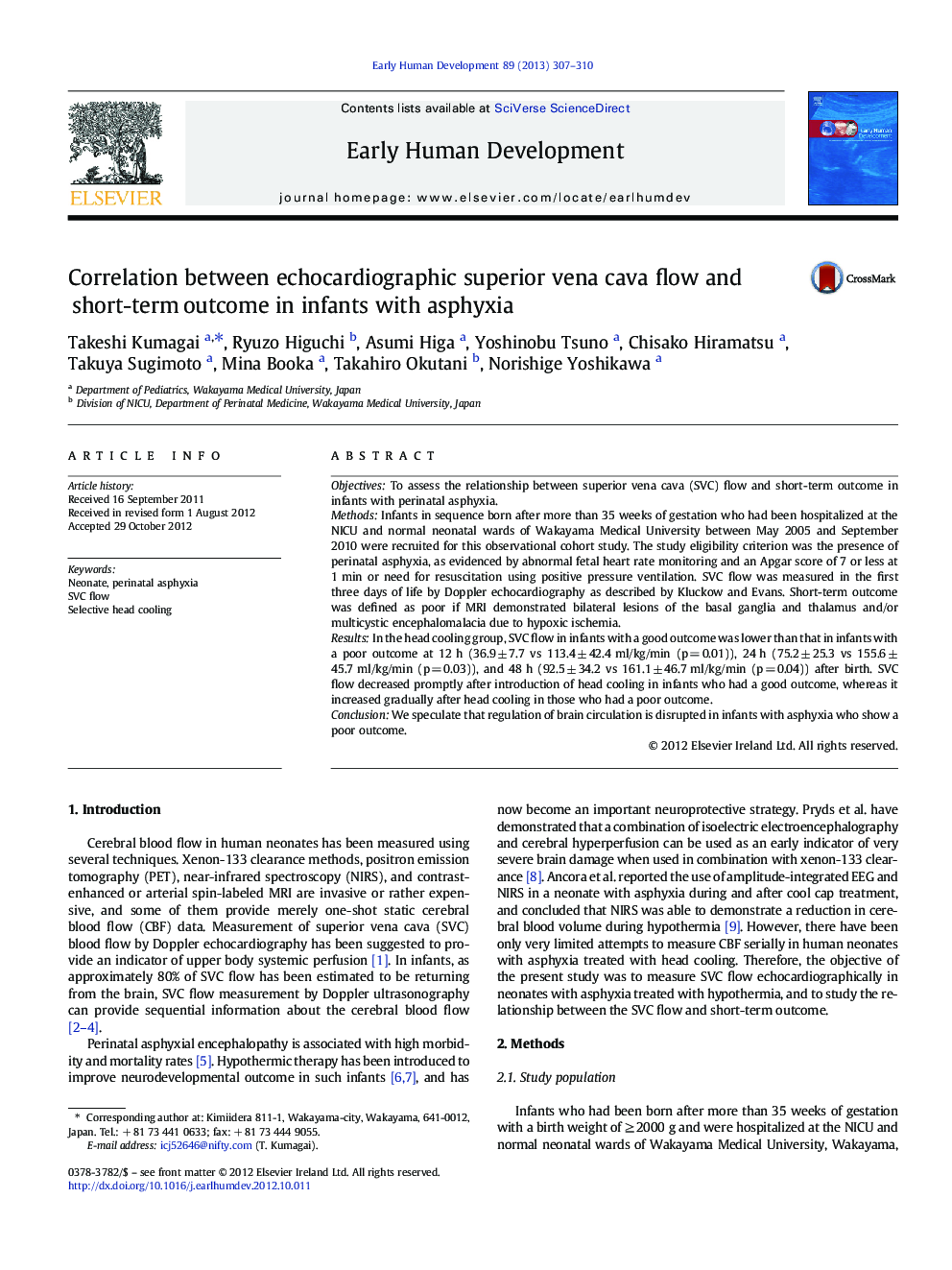| Article ID | Journal | Published Year | Pages | File Type |
|---|---|---|---|---|
| 6172009 | Early Human Development | 2013 | 4 Pages |
ObjectivesTo assess the relationship between superior vena cava (SVC) flow and short-term outcome in infants with perinatal asphyxia.MethodsInfants in sequence born after more than 35 weeks of gestation who had been hospitalized at the NICU and normal neonatal wards of Wakayama Medical University between May 2005 and September 2010 were recruited for this observational cohort study. The study eligibility criterion was the presence of perinatal asphyxia, as evidenced by abnormal fetal heart rate monitoring and an Apgar score of 7 or less at 1 min or need for resuscitation using positive pressure ventilation. SVC flow was measured in the first three days of life by Doppler echocardiography as described by Kluckow and Evans. Short-term outcome was defined as poor if MRI demonstrated bilateral lesions of the basal ganglia and thalamus and/or multicystic encephalomalacia due to hypoxic ischemia.ResultsIn the head cooling group, SVC flow in infants with a good outcome was lower than that in infants with a poor outcome at 12 h (36.9 ± 7.7 vs 113.4 ± 42.4 ml/kg/min (p = 0.01)), 24 h (75.2 ± 25.3 vs 155.6 ± 45.7 ml/kg/min (p = 0.03)), and 48 h (92.5 ± 34.2 vs 161.1 ± 46.7 ml/kg/min (p = 0.04)) after birth. SVC flow decreased promptly after introduction of head cooling in infants who had a good outcome, whereas it increased gradually after head cooling in those who had a poor outcome.ConclusionWe speculate that regulation of brain circulation is disrupted in infants with asphyxia who show a poor outcome.
